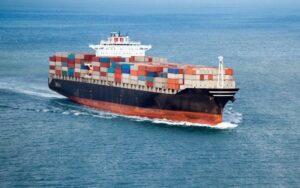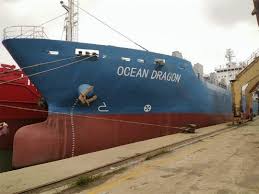Merchant ships are broadly classified on the basis of their sizes and areas of operation. The classification of the ship is decided right at the design stage on the basis of the route of operation and the purpose of the ship. The ship’s dimensions play an important part in determining the areas of operation of any type of the merchant vessel.

A variety of parameters such as draft, beam, length overall, gross tonnage, deadweight tonnage etc. are taken into consideration while designing and constructing a merchant ship. For e.g. for designing a ship that would be able to pass through the Suez Canal, the dimensions of the ship would be decided in such a way that the ship is able to smoothly transit through the narrowest and shallowest areas of the canal, in both fully loading and unloading conditions.
Ship sizes chiefly vary on their load-carrying capacitance, just as their variance alters on the constructional capacitance of the various ports and harbours. Considering the above-mentioned factors, the ships are classified into the following categories on the basis of their size:
Panamax and New Panamax
Panamax and New Panamax are terms used for ships that are designed to travel through the Panama Canal. The ship classification indicates the minimum dimensions required by the ship to be able to pass smoothly through the Panama Canal. The sizes of Panamax ships are determined by considering the dimensions of the smallest lock of the canal. Those ships which do not fall under the dimension criteria of Panama’s vessel are known as Post-Panamax Vessels.
The expansion of the Panama Canal by making new locks have given birth to a new class of ships called New Panamax vessels. New Panamax classification of ship sizes denotes those kinds of cargo ships that have been built in accordance with the new locks of the Panama Canal. These vessels have a load-carrying capacitance of about 13,000 Twenty-foot Equivalent Units (TEUs) with lengths up to 427 meters. The expansion of the canal with bigger size locks allows larger ships to pass through the canal with utmost ease.
Those ships which cannot pass Panama Canal are known as Post-Panamax Vessels.
Aframax
The term Aframax is usually used for medium-sized oil tankers with an approximate weight of 1,20,000 DWT. These ship sizes gain their title from the Average Freight Rate Assessment schematic devised by the shipping conglomerate Shell in the mid-1950s. Mainly oil tanker vessels, Aframax vessels can be loaded with over 7, 00,000 crude oil casks. Aframax tankers ply in areas that have limited port facilities or lack large ports to accommodate giant oil carriers. The beam of the vessel is restricted to 32.3 meters or 106 feet.
Chinamax
Chinamax vessels are one of the largest bulk carrier ships in the world and are often classified under Very Large Ore Carriers (VLOC). Unlike other cargo-carrying vessels which are measured in terms of their size, the Chinamax cargo ships are measured not just in terms of their size but also in terms of their length. These vessels were initially custom built to cater between the Chinese port facilities and the South American nation of Brazil, though presently the development of appropriate harbour facilities have ensured their applicability beyond these two regions. Also commonly famous as Valemax vessels, Chinamax ships have a Dead Weight Tonnage (DWT) of up to 4,00,000 tonnes and measure about 360 meters lengthwise with a breadth of about 65 meters and a draft of about 25 meters.
Handymax
Handymax vessels, often classified as Handymax bulk carriers, are small-sized cargo ships with a load-carrying capacity of up to 60,000 tonnes. One of the most commonly used vessels of the global merchant vessel fleet, Handymax vessels are typically 150-200 m in length. These vessels can gain easy entrance through most port and harbour facilities, just like their counterparts – the Supermax bulk cargo vessels, with slightly more DWT capacities. At times, certain classification of ship sizes also incorporates Handysize cargo vessels under the Handymax categorization.
Capesize
The term Capesize is used to signify those vessels which cannot pass through the canals of Panama and Suez and thus generally traverse through the Capes of Good Hope and Horn. Their name is derived from the originally taken route by cargo vessels, passing through the Cape of Good Hope and Cape Horn, so as to complete the necessary shipping voyage. Capesize vessels usually have 150,000 DWT tonnage capacity and form a majority of bulk carrier ships. They are usually medium – large-sized vessels, which also include Very Large Bulk Carriers (VLBC) and Very Large Ore Carriers (VLOR) with more than 200,000 DWT. Presently, different ship sizes with maximum DWTs of about 4, 00,000 tonnes are classified under the Capesize vessel category.
Suezmax
The term Suezmax is used for the largest ship that can pass through the Suez Canal. A typical Suezmax vessel has a capacity of 120,000 to 200,000 DWT with a maximum 20.1 drafts with a beam no wider than 50.0 m (164.0 ft) or 12.2 m (40 ft) of draught for ships with a maximum allowed beam of 77.5 m. Suezmax ships have lengths of about 275 metres stipulated as per the Suez Canal passage requirements.
Q-Max
The Qatar Max or the Q-Max ships as the vessels are colloquially referred are the biggest known LNG tanker ships. The Q-max’s have been specifically built to suit the entryway of the Liquefied Natural Gas depot of Ras Laffhan in the middle-east Asian country of Qatar. These cargo ships have a capacity to carry about 266,000 cubic meters of LNG.
Malaccamax
Malaccamax is the term used for the largest size of ship which is capable of passing through the Strait of Malacca. These vessels are often associated with Very Large Crude Carriers (VLCCs), though a specific assignation to their ship size has been annotated. These ship sizes measure about 400 meters lengthwise with a DWT up to 165,000 DWT. Used for both bulk carriers and supertankers, Malaccamax is also used for the new Maersk’s Triple E Class Container vessels.
VLCCs (Very Large Crude Carriers)
Supertankers that have a maximum DWT of 3, 20,000 tonnes are classified as VLCCs. These kinds of vessels are mainly put into operation in the Mediterranean waters, in addition to the Western African seas and the Northern Atlantic waters (North Sea).
ULCCs (Ultra Large Crude Carriers)
Cargo carrying supertankers having DWT range of 320,000 to 550,000 are classified as ULCCs. These cargo vessels are the biggest carrying tanker vessels with select areas of operation extending to European, Northern American and certain Asian harbours and port facilities.
Seawaymax
The Saint Lawrence Seaway forms an important sea passage between the water routes spanning linking United States and Canada. Seawaymax vessels are thus those vessels that can easily pass through this important waterway. Such kinds of vessels have lengths of about 226 meters with widths of about 24 meters and drafts up to eight meters.
The entire shipping industry rests on the smooth functioning of this merchant vessel classification The operational viability of the ships and their sustenance have helped in nurturing the global cargo shipping domain, while also preserving the integrity of a commercial set-up completely and thoroughly across borders.
Kindly like us on Facebook















